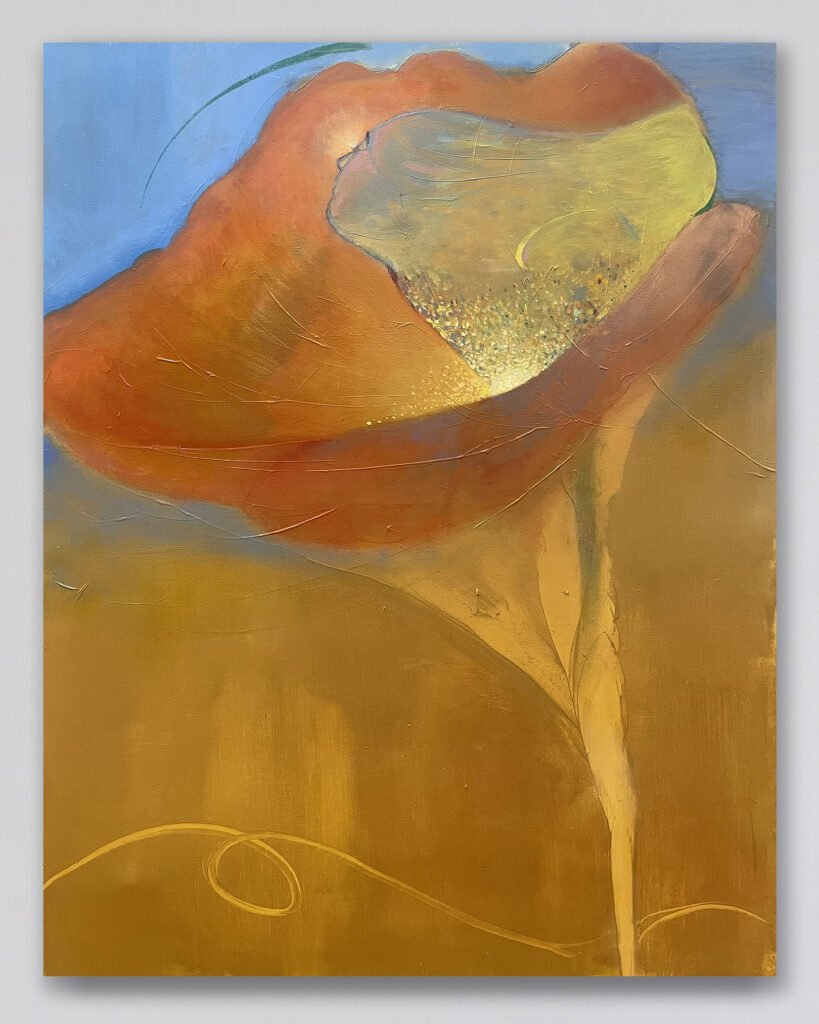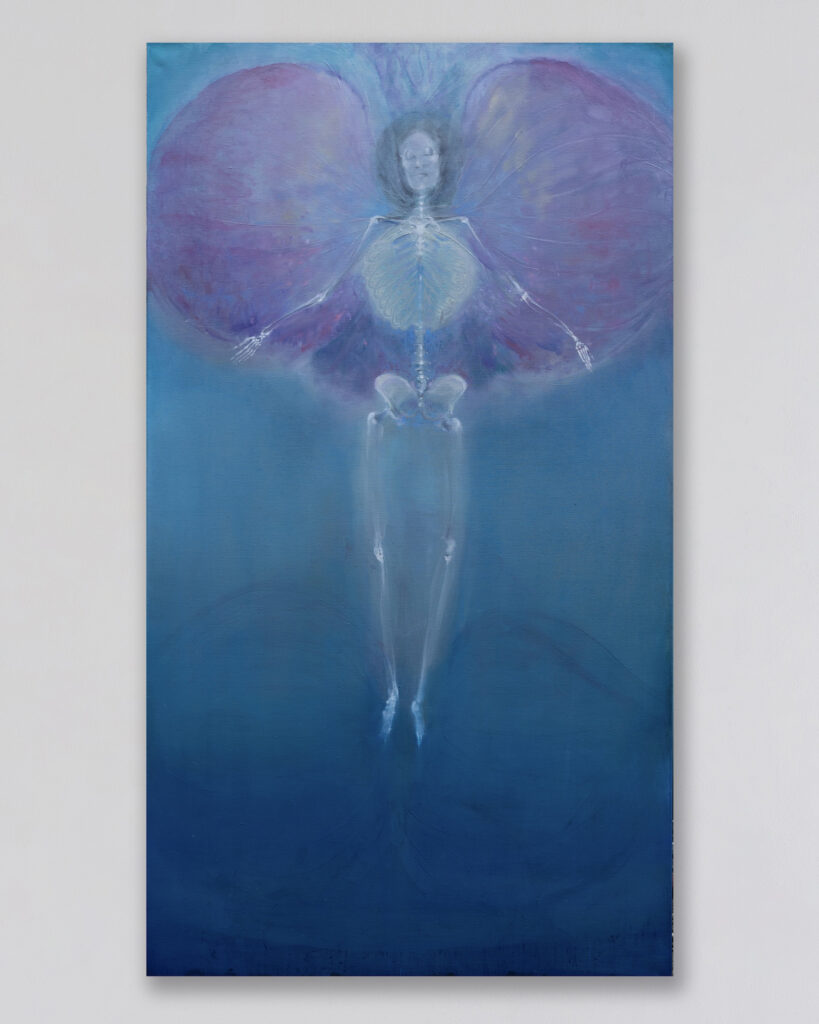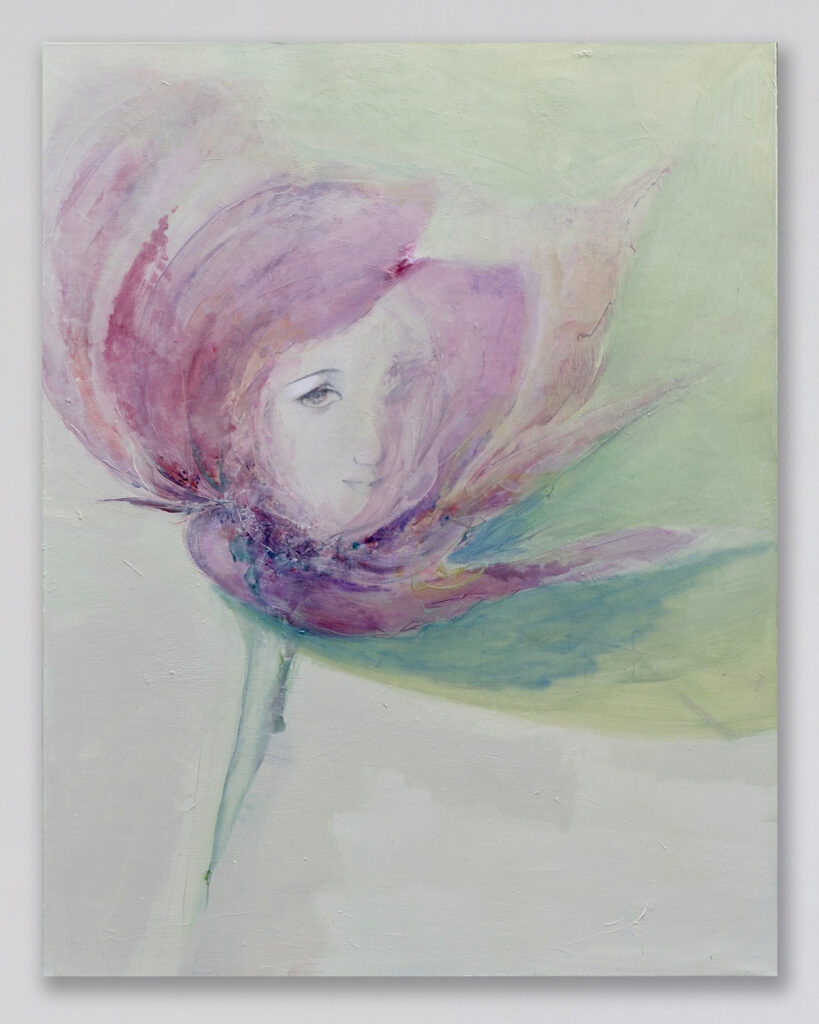Yage Guo – “Dissolving Boundaries”





Solito Gallery continues its 2025 program with “Dissolving Boundaries”, the solo show of artist Yage Guo (Inner Mongolia, 1998). For the first Italian exhibition, the artist presents a selection of new works created for the S1, main gallery of the Solito group, in the complex of the former Lanificio of Porta Capuana.
The exhibition is introduced and curated by Vincent Vanden Bogaard.
Yage Guo’s artwork showcases a diverse range of techniques, including oil painting, graphite and charcoal drawing. Central to her practice are concepts such as time, metaphor and Nidāna (Sanskrit and Pali word that means “cause, motivation or occasion” most commonly associated with Buddhist philosophy, where it refers to the cyclical nature of existence, suffering, and rebirth). Through her paintings of figures, flowers, and still life, Guo captures an ethereal and sentimental essence that conjures dreamlike fantasies.
Dissolving Boundaries, the title of the show, draws inspiration freely from the Neapolitan novels by Elena Ferrante, particularly the theme of “smarginatura” – a dissolution of identity, where reality, self-perception, and societal structures blur and disintegrate. This notion of instability is central to Guo’s practice; exploring transformation, gender, and impermanence, highlighting the fluidity of form and meaning. Embodiment of change, while floral and skeletal elements symbolize ephemerality and resilience, emphasizing the interplay of life and death.
For the development of the current exhibition, Yage Guo was also immersed in texts and literature such as: Philippa Gregory’s Plantagenet and Tudor Novels, Quaderno Proibito by Alba de Céspedes, Stone Butch Blues by Leslie Feinberg or Detransition, Baby by Torrey Peters. These works examine women and queer individuals navigating identity, independence, and self-definition. They challenge rigid societal norms of womanhood, motherhood, and love, portraying femininity as a fluid, contradictory concept that coexists with masculinity, embodying both harmony and chaos.
In Study of Judith with the Head of Holofernes, she’s reimagining Judith as androgynous – defiant, self-possessed, and unwavering – stripping away the traditional depictions of seduction. The Medusa portrayal challenges the conventional narrative. She is often painted in defeat – her severed head held as a war trophy, grotesque and monstrous. The artist wanted to depict a Medusa who, though vanquished, remains eternal, ambiguous, seductive, and poised for vengeance.
Mythology, much like identity, is fluid and ever-changing. It is inherited, reinterpreted, and molded by the passage of time. I am drawn to these spaces of uncertainty – seeking to fill them with my own interpretations and alterations.
Yage Guo’s Skeleton Series explores materiality, color, and transformation, drawing inspiration from personal loss and the cremation process. This transition from flesh to bone reveals the history within bone white, while the skull and its subtle smile symbolize the return to one’s essential form. In exploring emotional weight through color, various hues represent different themes: deep blues reflect quiet meditation on death and rebirth; purples embody desire; greens reflect eerie stillness and untamed vitality; yellows radiate warmth and the act of waiting; reds reflect pulse with sensuality and intensity. The theme of imaginative narratives, influenced by astrology and tarot, the artist uses these metaphors to translate abstract qualities into vivid imagery.
This approach leads to imaginative reincarnations of figures from literature and history, such as Marguerite d’Anjou (Margaret of Anjou was Queen of England by marriage to King Henry VI from 1445 to 1461 and again from 1470 to 1471) as The Chariot card or a blindfolded centaur representing Sagittarius.
In her four expansive paintings, Guo explores moments of transformation, when identity dissolves and reforms: Veil of Spring symbolizes renewal and memory – a bold flower emerging, only to dissolve back into petals and time – echoing the desire to affirm one’s existence. Reverie embodies departure and disintegration. Unraveling illustrates the fluid coexistence of life and death – an orchid blooming while a dissolving body morphs into bone. Liminal Dance portrays a woman in blue, dancing through empty space – moving between pain and joy, life and death, caught in an eternal cycle of transition. (VVB)
Yage Guo and curator Vincent Vanden Bogaard will both be present at the opening.
Yage Guo was born in Inner Mongolia in 1998 and raised in Shanghai.
Between 2017-2022, she studied at Slade School of Fine Art in the UK, where she completed her undergraduate and master’s study.
Yage Guo’s paintings encompass various techniques, including oil on wood panel or canvas, pencil drawing, and bookmaking. Drawing inspiration from literature, nature, mysticism, and imagery, she portrays figures, flowers, and still life with an ethereal style, using distinctive brushwork to evoke dreamlike fantasies and imaginary narratives. Time, Nidāna, and metaphor are central to her practice, approached with a romantic and contemplative sensibility. Her works go beyond depicting physical appearances, serving as metaphorical explorations of time’s passage and the depth of emotions.
Guo has participated in exhibitions, both in galleries and non-commercial spaces across several countries. Some recent exhibitions include: Ah, the mark on the wall! It was a snail, Petitree Art Gallery, Shenzhen; Traces of Swords, (solo show), PM/AM Gallery, London; A star at dawn, a bubble in a stream, Gene Gallery, Shanghai; Eat Drink Man Woman, The 180 Strand, London; What Now? PM/AM Gallery, London; Eyes, Dusk, Phantasmagoria, Rupture Xibit, London; Xenos, Universe Gallery, London; Decent Gaming, Linseed Gallery, Shanghai. She was awarded the Mary Rischgitz Prize in 2022. Her work is part of the Simon Nixon Collection.
Yage Guo lives and works between Shanghai and London.
Vincent Vanden Bogaard (b.1986) is an esteemed Belgian curator with a full-bodied and important resume and an independent consultant who has developed over time a strong knowledge and strategic vision for companies in the contemporary art market. In the last two years, he has dedicated himself to the development of the Solito project.
The formula of the Solito Galleries is a small holding company that manages, in addition to its own physical spaces, also a digital platform (awardee project of a ministerial call for Cultura Crea) and the iemme publishing project born in 2011. All initiatives are promoted on the website galleriasolito.com. We thank Hapto Studio in Milan, which curated the visuals of the project, Officina Keller of arch. Antonio Martiniello for the urban regeneration work that for years has involved the area of Porta Capuana and the former Lanificio complex, thanks to the social integration activities of local artisan realities, Lanificio Digitale, the open innovation HUB, which has created the digital platform to support Solito’s activities, Valeria Apicella’s Punto Zero Atelier and ANGAMC – National Association of Modern and Contemporary Art Galleries.


